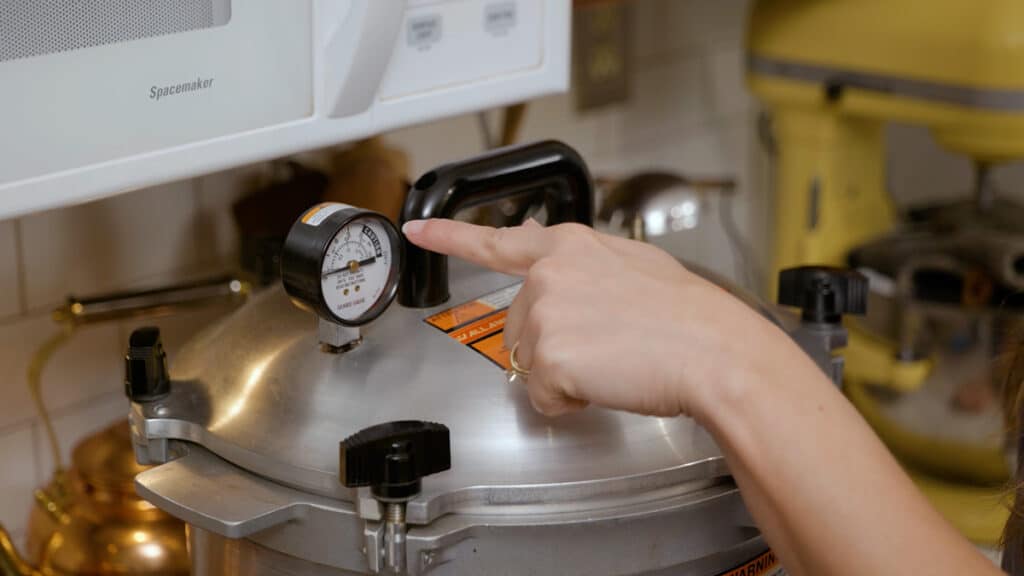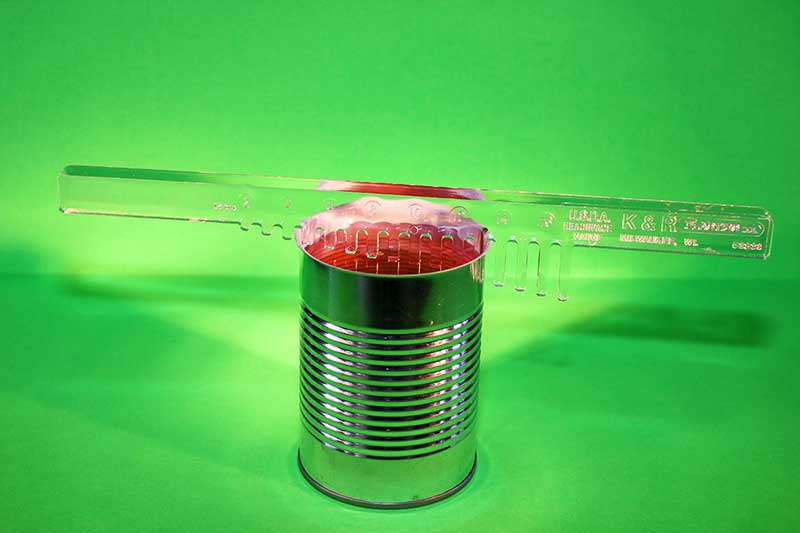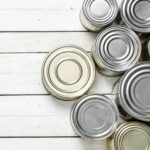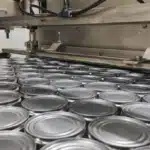Canning is one of my favorite ways to preserve food, but let’s be honest—it’s all about the details. One of the most important details? Headspace. If you’re new to canning, you might be wondering, “What exactly is headspace?” Simply put, it’s the gap between the food inside your jar and the lid. This little space plays a HUGE role in making sure your jars seal properly and that your food stays fresh and safe. Now, here’s the thing: Getting the right headspace is key to a successful canning session, and trust me, I’ve learned this the hard way. Whether you’re a seasoned canner or just starting out, using a canning measurer can really make a difference in getting that perfect seal every time.
But how do you measure it accurately? Why is it so important? In this guide, I’m going to walk you through everything you need to know about measuring headspace for canning, share some tips on the best tools to use, and explain why getting that measurement just right is so crucial for your canning success. Let’s dive in!
What is Headspace in Canning?
Headspace refers to the space left between the top of the food and the lid of the jar. This gap is crucial for proper sealing and preventing any potential spoilage. If there’s too little headspace, the food might touch the lid, preventing a vacuum seal from forming. On the other hand, too much headspace can lead to excess air inside the jar, which might cause the food to deteriorate more quickly.
Why is Headspace Important?
Having the right headspace can impact the safety, quality, and shelf life of your preserved food. Here are some key reasons why measuring headspace is so important:
- Proper Vacuum Seal: A tight vacuum seal is necessary to prevent contamination from air and microorganisms. If there’s too little or too much space, the seal might not form properly.
- Prevention of Overflows: When jars are overfilled, food might overflow during the canning process, resulting in a poor seal and a mess in your canner.
- Maintaining Food Quality: Headspace is also important for keeping food in the right condition. Too little space can lead to the food touching the lid, which may cause spoilage or uneven cooking during the canning process.
- Safety: The correct headspace ensures that the heat can circulate evenly, promoting proper sterilization and reducing the risk of bacterial growth.
How to Measure Headspace When Canning

Credit: melissaknorris.com
Measuring headspace may seem straightforward, but it’s easy to make mistakes. Fortunately, there are several tools and techniques you can use to ensure that you’re measuring headspace accurately every time.
Tools You’ll Need for Accurate Headspace Measurement
The most effective way to measure headspace in canning is by using a headspace measuring tool for canning. These specialized tools help you measure the gap between the food and the lid precisely, making sure that your jars are filled to the correct level. Some of the most popular options include:
- Canning Headspace Gauge: A simple, compact tool that fits inside the jar to measure the space between the food and the top of the jar. This gauge usually comes with markings for different headspace measurements (like ¼ inch, ½ inch, etc.).
- Canning Funnel with Measurements: This tool not only helps you fill your jars evenly but also provides measurements to ensure you’re leaving the proper headspace as you fill the jar.
- Headspace Measuring Tool for Canning: A more advanced option, these tools are designed specifically to give you the most accurate headspace measurements, often with clear, easy-to-read markings to guide you.
Using these tools helps you avoid guessing and ensures consistent results every time.
Step-by-Step Guide to Measuring Headspace with a Canning Measurer
Credit: meatsandsausages.com
Here’s a simple process to follow when measuring headspace during canning:
-
Prepare Your Jars and Ingredients: Begin by cleaning your jars thoroughly and prepping your food. If you’re using a canning funnel with measurements, this step can be done simultaneously as you fill your jars.
-
Fill Your Jars: Carefully fill the jar with the food, leaving enough room at the top for the appropriate headspace. Don’t overfill—if you’re unsure, use a canning measurer or headspace measuring tool for canning to guide you.
-
Check Headspace: After filling the jar, place your canning headspace measuring tool on the jar’s rim. Check the measurement to ensure that there’s the correct amount of space. If it’s too full, you’ll need to remove some food.
-
Wipe the Jar Rim: Before sealing the jar, use a clean cloth to wipe the rim and remove any food residue. This ensures a proper seal.
-
Seal the Jar: Place the lid on the jar, then screw the band on tightly but not too tight. Your jar is now ready for processing!
If you’re ever unsure about the right amount of headspace to leave, always refer to your recipe guidelines or consult with your home canning measurements reference. Each type of food has a specific headspace requirement based on how much expansion occurs during the canning process.
What Size Jars for Canning: Choosing the Right Jar
While measuring headspace is crucial, it’s also important to select the right size jar for your project. The size of the jar determines how much food you can preserve and can impact your canning jar measurements.
Popular Canning Jar Sizes
- Half-Pint Jars (8 ounces): Great for smaller batches, jams, jellies, and pickles.
- Pint Jars (16 ounces): A versatile size for preserving fruits, vegetables, sauces, and more.
- Quart Jars (32 ounces): Perfect for larger canning projects like soups, stews, and whole fruits.
The choice of jar depends on the type of food you’re preserving. For example, jams and jellies are often preserved in smaller jars, while fruits and vegetables are typically stored in larger quart jars.
When to Use Larger or Smaller Jars

Credit: masonjarlifestyle.com
When deciding what size jars for canning to use, consider the amount of food you’re preserving and how quickly you’ll use it. Smaller jars are ideal for items you’ll consume quickly, while larger jars are perfect for bulkier foods that you’ll need to store for a longer time.
Common Mistakes to Avoid When Measuring Headspace
Even with the right tools, canning can be tricky. Here are some common mistakes to avoid:
- Not Following the Recipe: Every recipe has its own specific headspace requirements. It’s crucial to follow the recommended measurements for each food type.
- Overfilling the Jar: Don’t be tempted to fill the jar all the way to the top. Leaving the appropriate headspace is essential for proper sealing and food safety.
- Incorrect Use of Tools: If you’re using a canning funnel with measurements, make sure you’re placing it properly inside the jar and checking the markings regularly to ensure accuracy.
Why Investing in the Right Canning Tools Makes a Difference
Using the correct canning tools makes your canning process more efficient and safer. A canning headspace gauge or a headspace measuring tool for canning can save you time and frustration, ensuring that you’re always hitting the right measurements.
If you’re new to canning, these tools are an excellent investment for making the process more streamlined. Whether you’re preserving fruits, vegetables, or homemade jams, having the right equipment will make sure your jars seal properly and your food lasts for months on the shelf.
FAQ’s
Here’s a quick peek at some of the most common questions about measuring headspace for canning:
What is the correct headspace for canning?
It varies by food—typically ¼ inch for jams and jellies and up to 1 inch for vegetables. Always check your recipe.
Can I use a regular measuring cup to measure headspace?
A regular measuring cup won’t give you the precision you need. Use a canning measurer for accuracy.
How do I know if I’ve left too much headspace?
If there’s too much headspace, the jar may not seal properly. Check with a canning headspace measuring tool to be sure.
Can I reuse my canning measurer every season?
Yes, most canning tools are reusable. Just clean them well between uses.
Where can I buy a canning measurer?
You can find them at hardware stores, farmers markets, or online. Be sure to choose one that suits your needs.
The Bottom Line
Measuring headspace is a crucial part of the canning process. Whether you’re using a canning headspace gauge, a canning funnel with headspace measurements, or a headspace measuring tool for canning, these tools help ensure that your jars seal correctly and your food stays safe for long-term storage. By investing in the right canning tools and paying close attention to headspace, you can preserve your food with confidence and avoid common canning mistakes. And, as you continue to learn canning and explore different canning methods, the more experience you’ll gain, and the easier it will become to master the art of home canning.
So, grab your canning measurer, check your canning jar measurements, and get started on your next canning project today!





